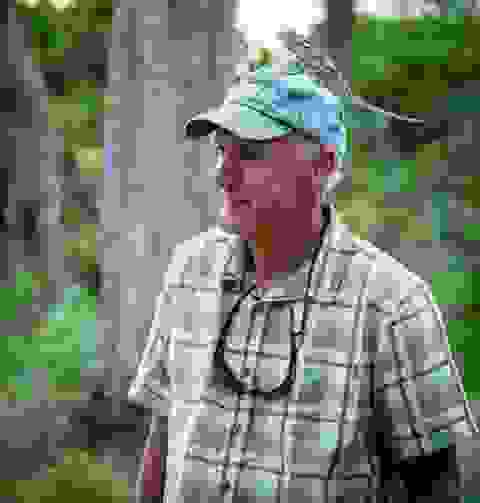Biodiversity: that’s a word many biologists are well familiar with.
But even before the term was coined by E. O. Wilson in his 1992 book “The Diversity of Life,” Dr. Lee Fitzgerald and his research team were cataloging biological diversity within the country of Paraguay.
Fitzgerald, professor and curator of Amphibians and Reptiles in Texas A&M University’s Department of Wildlife and Fisheries Sciences, is accustomed to traveling for his field research. Referring to himself as a “conservation biologist, herpetologist and ecologist,” his research focuses on understanding ecological factors that influence persistence and distribution of reptile and amphibian species in various habitats.
Fitzgerald said he looks at how physiology, community ecology and population biology influence the way in which species are distributed across the land.
“I’m really interested in understanding what makes conservation work and also understanding the ecological factors that make species disappear,” he said. “Knowing what makes species and ecological communities persist points the way to understanding what causes the loss of biodiversity.”
Fitzgerald defined biodiversity as “a concept that encompasses the structural arrangement of life from genes to species to ecological communities to ecosystems and the functional interactions among life forms and their environment. Measurement of biodiversity, for example by understanding changes in species diversity and the distribution of species, has become a fundamental step in developing conservation priorities and management practices.”

His current research projects focus on conservation of ground lizards, particularly the dune sagebrush lizard and the community of lizards in the Monahans sand hills of West Texas and in adjacent New Mexico. He also works with his graduate students to study other animals such as frogs, lizards, snakes, alligators and turtles. More recently, he has assisted in ongoing research on the Nile crocodile of the Okavango Delta.
“I go to the field a lot,” he said. “I spend a lot of time in South America and the deserts of the southwest.”
After graduating from Stephen F. Austin State University, Fitzgerald joined the Peace Corps and was stationed in El Salvador for a year, where he worked on a project to study green iguanas and spiny-tailed iguanas. “I lived in a very small national park and worked with park rangers,” he said. “We did mark and recapture studies of the iguanas.”
The outbreak of the Salvadoran Civil War forced Fitzgerald to evacuate from El Salvador and move to Paraguay, a small, landlocked country in central South America. Once there, the team of young biologists in the Peace Corps, National University, Paraguayan Forest Service and visiting scientists from the Smithsonian Institution and U.S. Fish and Wildlife Service began the ambitious task of discovering the biodiversity of the country, at a time, as Fitzgerald put it, “before the word biodiversity was invented.”
“We did biological inventories of the country of Paraguay and started a national museum of natural history,” he said. “That’s where my roots go back to, in fieldwork, collecting and museum curation.”
Fitzgerald said his fieldwork in Latin America strengthened his understanding of conservation and sustainable development and exposed him to several important mentors. This combination helped inspire him to become a herpetologist and earn his doctorate in biology from the University of New Mexico, where he set his course on a career in research at Texas A&M University.
Fitzgerald said what he enjoys most about his research is the process of learning how ecological systems work and exploring how species interact with the environment. “I love it for the fieldwork,” he said. “I really like fieldwork and traveling and seeing new systems.”
Human actions significantly affect the status and distribution of wildlife populations, and Fitzgerald has always included local people and institutions in his work. “Humans play a role in everything and that’s why we talk about the Anthropocene as a new era on the planet,” he said. “Human activity affects pretty much every single thing, enough that we are re-configuring the surface of the earth.”
Fitzgerald said he wants his research and teaching at Texas A&M to make a difference in the world. For more information about his research, visit The Fitzgerald Lab.

